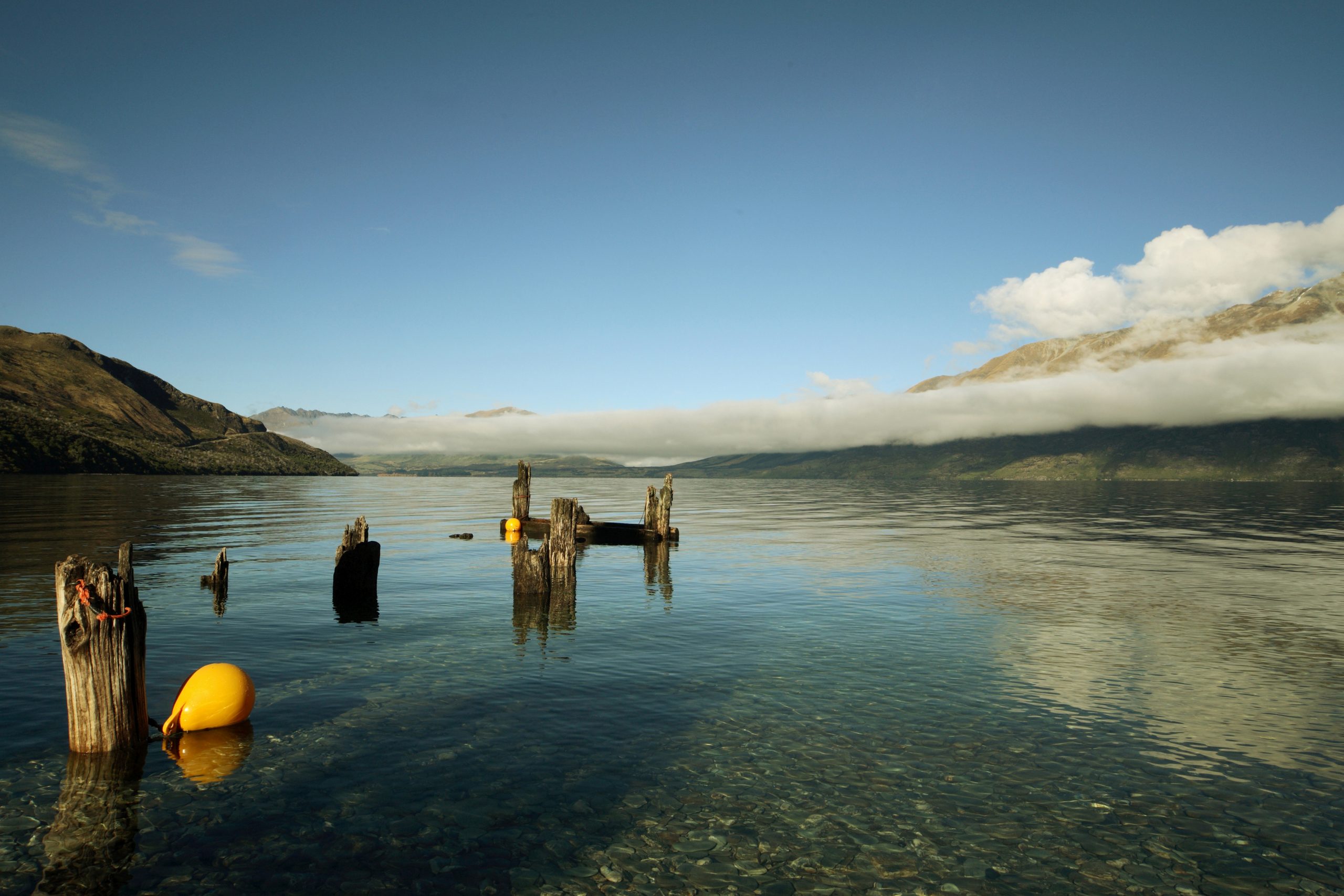Splashing about in a cool, freshwater stream – it’s as much a part of the Kiwi childhood as a sun-soaked day at the beach. And it’s all part of the legacy we want to pass on, right? Damian Christie looks into the state of our waters
Growing up in Upper Hutt didn’t have a lot going for it, I’ll be honest. Good memories are few and far between, but almost all of them involve the river. Ahh, the river. Long languid weekends spent rafting on inner tubes, doing bombs off the bridge. Sunny afternoons ditching school and, in later years, teenage parties on the riverside.
If beaches are the superstars of the New Zealand summer, then our lakes and rivers are the faithful assistants, sometimes appreciated, but often forgotten, neglected, and landed with all the hard work. And they’re paying the price.
There is a statistic doing the rounds. You might have heard it: 90 percent of our lowland rivers aren’t safe to swim in. It sounds simple enough, but at the same time, unbelievable. “Oh that can’t be right, you must mean…” is the general response I get when testing it out on unsuspecting taxi drivers (my litmus test for most things).
So is it true? And what does it mean?
Massey University ecologist Mike Joy is becoming something of a champion of the Kiwi waterway. Earlier in the year it was his worrying words – “we are delusional about how clean and green we are” – and that statistic which were put to Prime Minister John Key in an interview on BBC Hardtalk.
“Well that might be Mike Joy’s view,” said the PM, “but I don’t share his view… he’s one academic, and like lawyers I could provide you with another one who will give you a counter-view.”

“It’s not an opinion,” says Joy, “it’s a whole bunch of facts.” And as a fact, it’s one that keeps being repeated – in September a report from Environment Southland found 89 percent of river and stream sites tested were either of poor or very poor quality.
It’s easy to think there was some halcyon time when our rivers were pristine, when families could frolic safely in any local stream. And there must have been, but it wasn’t in my parents’ childhood in the 60s. It certainly wasn’t in mine, two decades later. In fact television reports from the time show what would these days be an unthinkably callous disregard for the environment – factories, farms, freezing works, even entire town sewage systems, discharging directly into the nearest flowing body of water.
In the 1970s residents of Lower Hutt could walk to work past the Waiwhetu Stream, which runs through the city, and tell what dye had been used at the Feltex carpet factory, as the entire river would flow yellow, or blue, or red. In 1972 the Waiwhetu Stream caught fire and burned for an entire day.
These days those industrial waste-spewing pipes, for years almost shorthand for water pollution, have been reduced, and what remain are certainly less overt.
“We’re putting less blood and guts in there, we’re making things look better, we’re taking the lumps out,” says Mike Joy. The pipes that are still there today tend to enter underneath the waterline.
This kind of direct waste – pipes going into the water – is known as point-source pollution, and its gradual reduction is one of the success stories when it comes to cleaning up our waterways. On the rise, however, is nonpoint source or diffuse pollution, which includes urban stormwater run-off and, increasingly, the potent stew of effluent discharge from intensive dairy farming.
A recent OECD report describes New Zealand’s water quality as ‘good’ relative to most OECD countries but deteriorating. Dr Kevin Parris of the Paris-based Trade and Agriculture Directorate visited New Zealand recently and says the deterioration is due, in large part, to diffuse pollution from agriculture.
For obvious reasons, diffuse pollution is harder to deal with. There’s no one person or business to point the finger at. As such, the Resource Management Act, the main tool councils have for ensuring environmental compliance, is difficult to apply. And increasingly, say critics like Green co-leader Russel Norman, leaving a resource as significant as water to individual regional and local councils is not working.

“Diffuse pollution has really degraded rivers a lot compared with where they were 10 or 15 years ago,” says Norman, “and it’s getting worse every year.”
The Green Party recently launched its Clean Rivers campaign as part of its election drive. While National Standards has become a divisive term in the education sector, the Greens think that National Standards for waterways – both how much water can be taken from them and how much pollution can be put in – could play a big part in solving our growing freshwater crisis.
The two other arms of their proposed policy include a charge for irrigation, which represents more than three-quarters of our total freshwater use, and providing support for water clean-up initiatives, such as fencing off pastoral waterways.

It’s the latter which Bob Wilcock, a principal scientist at NIWA, believes is the single biggest thing we can do. “I’d have enforced riparian protection on all waterways, all rivers. Fenced back maybe five metres, and plant it out. It creates that buffer between the land and the water for a start, but it also creates shade. One of the things that’s not recognised is habitat loss, so not only are you getting pollutants but you’re losing the habitat for all our native fish, and the things that make New Zealand uniquely different from the rest of the world. Things you hope our kids [can] grow up to enjoy.” Bob Wilcock is right to worry. Two-thirds of our 40 species of native fish are on the threatened species list.
While it’s up to farmers to fence off their own waterways – the Dairying and Clean Streams Accord signed between Fonterra, the ministers for agriculture and the environment, and regional councils, set targets of 90 percent of dairy cows excluded from streams by next year – riparian planting and clean-up are areas where individuals can help, with local volunteer groups operating in many regions.
The Greens may be putting rivers in the spotlight in the lead-up to the next election, but that’s hardly a surprise. With the current government’s focus on growing the economy, environmental issues are not a high priority for the National Party – it’s telling that the environment merits a single line under Other Initiatives at the bottom of its website. Meanwhile Labour’s website makes no mention at all of environmental issues.
To its credit, in 2009 the government established the Land & Water Forum, comprising industry, environmental, recreational and iwi groups. In 2010 the forum issued the report ‘A Fresh Start for Freshwater’, and in September the government launched its Fresh Start for Fresh Water reforms by way of response. These included a National Policy Statement for Fresh Water Management, using the Forum to develop practical recommendations on the use and abuse of fresh water. Whether these go far enough in tackling diffuse pollution and excess irrigation remains to be seen. In August the government also pledged $11.6 million to clean up Lake Ellesmere, our most polluted lake.
The good news, when it comes to rivers, is that almost all damage is reversible. “Rivers are the easiest things in the world to clean up,” says Mike Joy. “You just have to stop the inputs.”

Unfortunately, when most of those inputs are a direct result of our $15 billion agricultural export industry, stopping them is not that simple. And here’s the catch-22: the success of our agricultural exports is reliant on New Zealand’s clean green image, and yet that same agricultural industry presents the single biggest threat to that image. Many believe that, at least in some regions, intensification of dairying has gone beyond what the land can deal with and needs to be scaled back. But convincing the farmers and politicians we need to put limits on our most productive sector is going to take some work.
These days, the Waiwhetu Stream in Lower Hutt is unrecognisable from the stream of 40 years ago. Since the clean up started in 2008, $21 million has been spent and 56,000 tonnes of contaminated silt has been removed, the build-up from decades of abuse. Today the stream that ran all the colours of the rainbow, the stream that burned for an entire day, runs clear. The billion dollar question is whether the Waiwhetu Stream is destined to be the exception, or the rule.
Watershed
It’s amazing what can be achieved when people adopt their local streams. Here’s a snapshot of three successful initiatives:

Auckland’s Project Twin Streams is a large-scale restoration project aiming to improve water quality in Waitakere streams. Banks are steadily being replanted with native plants to stabilise them from erosion, filter toxins before they reach the water and create a cool, shaded environment for ecology to thrive. Community organisations are contracted by the council to work with locals to adopt areas and organise community plantings. www.projecttwinstreams.com
Restoring the Waitao Stream, which runs from east of the Kaimai Ranges to Welcome Bay in Tauranga, has been a labour of love since neighbours and local iwi started working on the project back in 2003. Many of the group began with their own properties, and are now supporting other landowners with riparian fencing and planting. Slowly but surely, the Waitao Stream’s margins are improving. Mail drops, newsletters and a roadside notice board keep the community informed about upcoming working bees. good.net.nz/waitao
Environment Southland are getting their schist sorted. The Living Streams project started in the Waihopai catchment in 2006 and the Sandstone catchment in 2007, in response to concerns about water quality in the Waihopai River. Keeping the stock away from the river was seen as a crucial first step towards improving water quality – and by offering financial incentives for landowners, more than 66km of new fences have now been erected. www.es.govt.nz/environment/ water/living-streams
–Esther Tetlow







